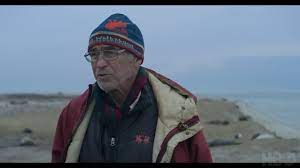After the Bite Review 2023 Tv Show Series Cast Crew Online
After the Bite doesn’t open with the scary stuff – it’ll get to that – but rather, on the first day of lifeguarding on the Cape Cod beach near the town of Wellfleet, Mass. Lifeguarding on this particular stretch of sand is the anti-Baywatch; their primary duty is to keep an eye out for dorsal fins. They always have the pink shark flag up, because whether anyone sees them or not, the sharks are there; when they spot one, the black flag flies and swimmers have to leave the water for an hour. White sharks, the granddaddy of all ocean predators, fearlessly navigate their eight-to-15-foot bodies into waist-deep water with terrifying stealth. Sometimes, they take a curious bite from a human swimmer. Sometimes, the swimmer survives – one man punched the fish in the gills until it let go, something he learned by watching shark documentaries on TV.
But that wasn’t the case with Arthur Medici. We meet the woman who helped pull him from the water: By the time she got there, “All the blood was long gone,” she says. “There was no helping the poor boy.” The event is described as a turning point in the Cape Cod area, where residents, authorities and scientists react by arguing practicalities and ideologies. One of the lifeguards opens the can of worms with a simple statement: “Multiple species love this area for different reasons.” And they’re loving it more now than they ever have. For many years, sharks hadn’t been a problem in the area, but that changed in the past decade. Why? The area gray seal population boomed. In the 1950s, people collected bounties for seals, culling the population, but a federal law protecting the animals was passed in the early ’70s. Their numbers are greater than ever now. And few things are more delicious to white sharks than big, blubbery seals.
The problem is, during the shark down time, the Cape Cod area became a well-established recreational area, a gorgeous spot with sandbars that’s ideal for surfing and swimming. Now, nobody wants to budge. Locals are of two minds: Some believe that humans are part of the ecosystem, and deserve to occupy the water; they blame the inability to legally control the seal numbers, and point fingers at the government for not dealing with an issue of public safety. Others try to find a way to live with the animals, spurred by conservationists and the scientific community, who tag white sharks that can then be tracked on a phone app. Maybe these are solutions to the problem – or maybe they’re indicative of greater issues of ecology, climate and politics.
Meeropol doesn’t just drop in and get the Cape Cod color to cut in-between creepy dah-dum… dah-dum… underwater footage. No, she talks to struggling fishermen, some of whom point to warming waters and large, commercial fishing for the recent downturn of their livelihoods. She talks to men who’ve been swimming and surfing in the area for decades and feel they shouldn’t have to change their lifestyles, or see tourism-based businesses shut down. She talks to the shark researchers who pump their fists when they successfully plant a tag on a dorsal fin, and give the animals cutesy names like Turbo and Nan-sea (as they’re identified on that handy locator app). She talks to seal researchers and lifeguards and writers and the guard-shack gentleman who’s both kook and philosopher, and rightfully believes that humans should show some humility in the face of nature.
Meanwhile, as debates rage and scientists try to gather data and locals ponder whether they should allow their teenage kids to surf again, families flock to a beach lined with shark warning signs and a orange boxes labeled SEVERE BLEEDING FIRST AID.
And all this makes After the Bite a remarkably detailed portrait of a community and ecosystem that are both out of balance – and is a microcosm for the eternal humans-vs.-nature conflict, of which there’s no greater example than that of global climate change. Implications spin carefully from the narrative, Meeropol showing an eye for detail and a knack for acquiring potently meaningful observational footage and interviews. The director doesn’t stack the doc with the usual awe-inspiring shots of great whites; like Spielberg did with Jaws, she understands that the less we see the shark, the greater the impact when we do (e.g., a nifty dorsal-fin cam, and naturalistic shots of a shark ripping chunks from a whale carcass). She finds an interviewee who poetically describes the situation as encompassing life, death, power and violence, and finds others who spend entire summers barefoot, on the sand and in the water. Few documentaries feel so much like real life in all its fascinating complexity.




